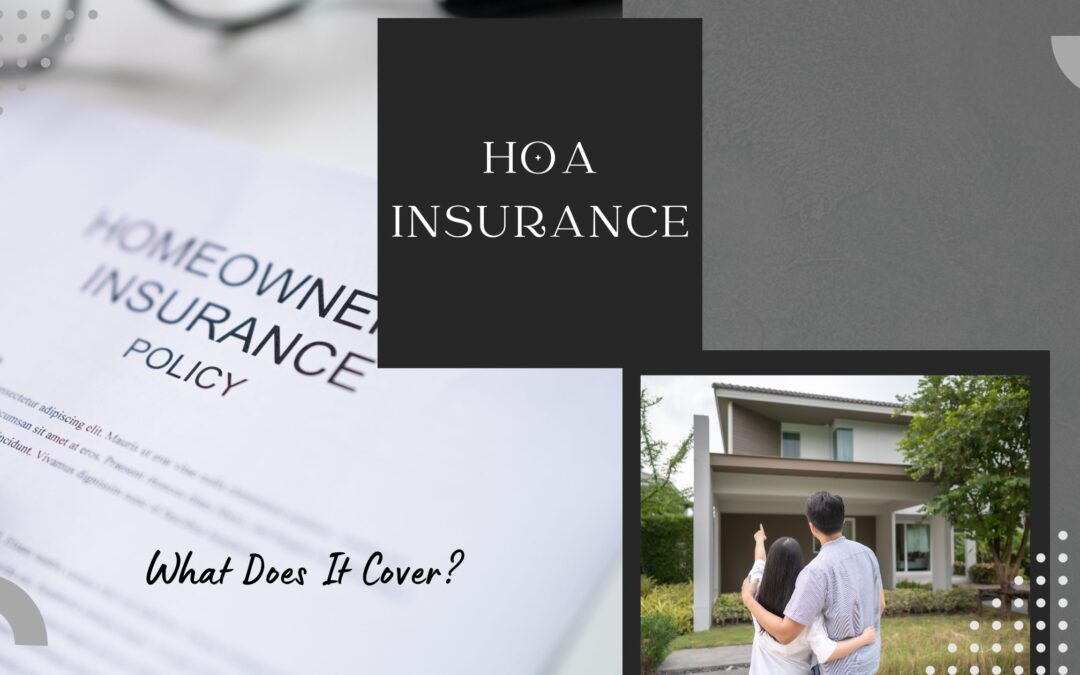When living in a Homeowners Association, both the association and the homeowners carry insurance whether the community consists of houses, townhouses, or condominiums. Usually, state law dictates what the HOA’s insurance needs to cover at a minimum. Before joining a community, property owners should check what the HOA’s insurance covers because the property owner may be responsible for everything else. Even though HOA’s and homeowners have clear lines on their coverage, there is often confusion regarding damages. We’ll go over the different types of insurance for condo owners, homeowners, and HOAs.
Master Insurance Policy for Homeowners Associations
The association has its insurance policy, called the “Master Insurance” policy. The policy usually covers common areas like pools, lobbies, fitness centers, and clubhouses. When it comes to condos, it might be referred to as a “walls-out” policy because it covers most things outside the unit, including roofs, shared walls, or other structural areas. If you think about your homeowners’ path for HOA’s Insurance and their own, the monthly membership fees cover Insurance. Insurance will also protect the members from personal liability for injuries in areas overseen by the board.
Three types of master insurance policies for Condo Associations
The first is called bare walls coverage. Bare walls insurance is the most basic option for coverage. The policy covers the structure, any property collectively owned by the condo association, and most fixtures and furnishings in the common areas.
The second is single entity coverage. This policy includes everything in bare walls coverage and extends to built-in property, like fixtures in individual condo units.
The third and most expansive option is all-in coverage. It covers all property owned by the HOA, and that is part of the structure. Meaning it would cover the interiors of the condos, including improvements and additions. The owner would only need coverage for their belongings.
For communities made up of individual homes, the HOA’s policy usually covers shared areas, such as parking areas, clubhouses, and pools. They usually also protect homeowners from personal injury lawsuits from injuries in the HOA’s covered areas. The HOA will also have coverage for major repairs due to weather, natural disasters, or fire.
HO6 Condo Insurance
Insurance for condos, called HO6, covers the apartment, protects against liabilities, and helps cover costs if the unit is uninhabitable. The HO6 insurance policy is sometimes called “walls-in” coverage since it only applies to the condo. For condos, their insurance policy is called HO6. It is very similar to regular homeowners’ insurance but has a few extras.
HO6 is the insurance policy that covers the individual condo. It is not usually required by law, but the HOA and the owner’s lender will require a certain coverage level. The HO6 covers the unit’s interior structure, including the possessions, which is where it gets its name, “walls-in” coverage. Liability, such as if someone is injured inside the condo, and loss of use (the condo is uninhabitable) are also usually covered by an HO6 policy.
The “walls-in” or HO6 coverage will have a defined list of “named perils” that it covers. The most common are fire, theft, and vandalism. With this policy, the homeowner will be responsible for any damage caused by anything not in the list of “named perils.” However, owners often have an option to add additional coverage to make their policy “open peril.” An “open peril” policy is exactly what it sounds like – it will cover damages caused for any reason unless that “peril” is specifically excluded. Usually, the list of exclusions is pretty small.
The challenges come up when there are damages covered by either the HO6 or the master policy. For example, if there is water damage, the cause will determine which policy covers it. If the damage is from a leak on the roof, the HOA policy will be used. If it was caused by the condo owner’s air conditioning unit, the HO6 would cover it.
Homeowners Association Insurance
Insurance for homeowners will have the minimum coverage required by the lender and the HOA. Usually, this means the individual’s interests are protected in the event of a fire, vandalism, theft, or accident on their home’s property. They need to carefully check what the HOA will cover and make sure they purchase insurance to cover the rest. If they own precious items, they will probably want more coverage. Often HOA policies do not cover flooding, which is the most common cause of damage in the United States. If the HOA’s policy doesn’t cover it, the homeowner will need to buy flood insurance. And a portion of the dues paid by homeowners, just like condo owners, will pay for the HOA’s insurance policy.
Conclusion
Both the HOA and the homeowner will have to purchase insurance. HOA insurance minimums are defined by state law. Homeowners have to cover the rest of their needs. The HOA policy will usually cover common areas, facilities and even protect the homeowner’s liability if injuries occur in any of those common areas. If damage occurs and whether the HOA or the homeowner is responsible, a lawyer should be consulted.

